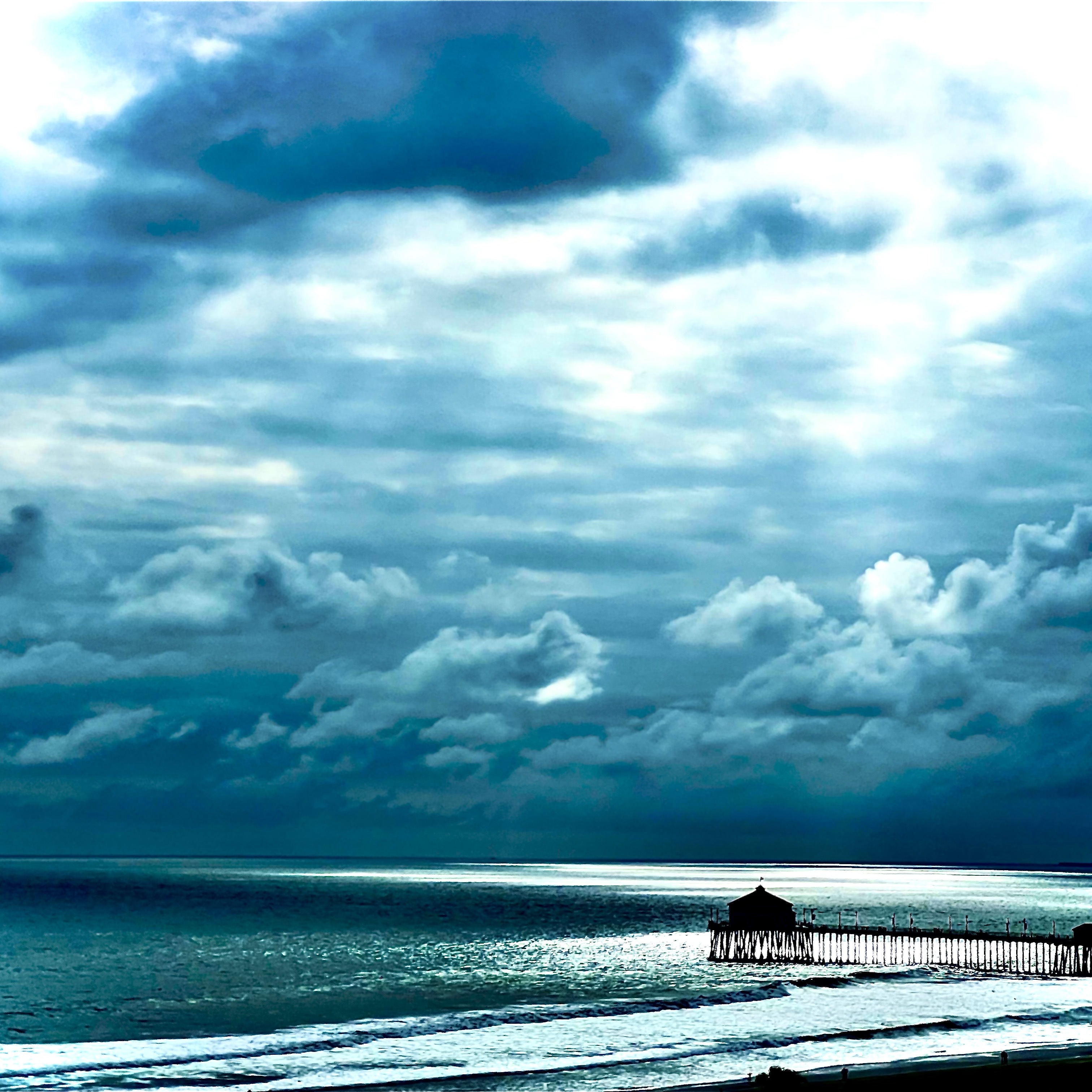Shady Oak Barrel House
Château Duhart Milon
Pauillac Cabernet Sauvignon - Merlot Blend 2006
The 06 vintage was more highly praised by the Bordelais than it delivered. That’s not to say, some producers didn’t deliver.
This 06 is not at its peak...still needs a few years. Will it be a wine that blows you away? Not likely but, it will deliver nice fruit, earth & balance. Especially, with a Ribeye.
The nose shows; ripe; blackberries, dark cherries, black raspberries, baked strawberries, dry cranberries & some black plum. Saddle-wood, limestone minerals, dry stones, cinnamon, soft spice, light vanilla, black rich earth, touch of black licorice and red & dark fresh florals.
The body is round and a little lean but puts on weight with food and decanting. The structure, length & tension are falling into place. The fruits are ripe and expressive. Blackberries, dark cherries, black raspberries, baked strawberries, haunting blue fruits, dry cranberries & some black plum. Saddle-wood, touch herbaceous, mint, limestone minerals, dry clay, dry stones, cinnamon, soft spice, cola, light vanilla, black rich earth, touch of black licorice and red & dark fresh florals. The acidity is round and beautiful. The finish is on the leaner side but, well balanced and lasts a full minute. 9.1 without the Ribeye, 9.2 with it.
Photos of, Duhart Milon, Cabernet ready to to be pressed, wine making facilities and their barrel room.
Producer history and notes...the Rothschild family is divided into two sects for lack of a better word. There are the ones that own Mouton Rothschild and Cleric Milon etc. and the other owns Lafite and Duhart. The two sides of the families don’t necessarily get along. However, they are two of the oldest/wealthiest families in recorded history.
Duhart Milon was originally known only as Chateau Milon. At one time the estate was the second wine of Chateau Lafite.
The story about how this came to be is interesting. The owner of Lafite at that time was the Marquis Nicolas-Alexandre de Segur. King Louis XV called him “The Wine Prince” because of his extensive vineyard holdings in Bordeaux. The Milon vineyards were well regarded but, not as good as Lafite, which is how the wine came to be thought of as the second wine for Lafite.
In 1815, the property was considered by some people as a fourth growth Bordeaux wine in the making. In those days, the wine was sold under the name of Chateau Mandavy-Milon. Between 1830 and 1840, the Casteja family inherited the estate.
The label of Duhart Milon, according to family tradition came about from an old legend written about one of their ancestors, Sir Duhart. Sir Duhart, was rumored to have been a pirate for Louis XV. He retired in Pauillac. The “Pirate’s House” on the Pauillac port existed up to the 1950’s. That original building inspired the label for the Duhart-Milon wines.
The Casteja family remained in possession of Duhart Milon until the first part of the 20th century. At the time, Chateau Duhart Milon was one of larger Pauillac estates with around 50 hectares of vines.
In 1937, the result of successive inheritances led to the sale of Duhart Milon. The Left Bank property went through five different owners in just 25 years. As well, the vineyards were split up and with the frost of 1956, the quality of Duhart Milon continued declining until the Rothschild family purchased the property in 1962.
At that time of the sale, Chateau Duhart Milon included 110 hectares of land, of which only 17 hectares were planted with vines. The entire vineyard was in desperate need of replanting. Major renovations were urgently needed in the vineyards, which demanded work on the drainage and replanting.
The size of their vineyards were also increased with the purchase of other parcels adding to the size of their Medoc holdings. New cellars needed to be built as well.
Chateau Duhart Milon remains one of the few 1855 Classified Growth estates without an actual Chateau. At Duhart, all you will find are the cellars, vatting rooms and barrel storages.
During the period of 1970 to 2000, the vineyards nearly doubled in size! Additionally, they constructed new cellars, renovated and modernized their wine making facilities as well in 2003. By 2008, the wine of Duhart Milon increased in quality, stature and price.
Much of the price increase had to do with the association with Chateau Lafite Rothschild, which had by that time, become the most in-demand, collectible wine in China. By the time the 2015 vintage was offered, prices had dropped to a more affordable price level due to changes in Chinese laws regarding client gifts/bribes.
The 152 hectare vineyard of Chateau Duhart Milon includes; 76 hectares of vines planted to 67% Cabernet Sauvignon and 33% Merlot. This makes Chateau Duhart Milon one of the few 1855 Classified Growths with only two grape varieties planted in their vineyards.
The average age of the vines are 30 years old. The vineyard is planted to a vine density of 7,500 vines per hectare.
Duhart Milon vineyards are located in northern Pauillac, on the western side of Chateau Lafite Rothschild, on the Milon hillside, which is not far from the Carruades plateau...now Lafite’s second wine. This places the vineyard quite close to Chateau Mouton Rothschild and Chateau Clerc Milon. However, because of micro climates, this is a slightly cooler terroir, due to its northern exposure.
The naturally cooler soils provides more freshness to the wine, and allows for later picking. The terroir of Chateau Duhart Milon is a combination of gravel, sand and limestone soils. The Duhart Milon vineyards are unique in Pauillac, as the vines are for the most part, located in 1 single, large parcel.
The vinification of Chateau Duhart Milon takes place in temperature controlled stainless vats. Malolactic fermentation takes place in vat. Chateau Duhart Milon is then aged in an average of 50% new French oak barrels for 14 to 16 months, depending on the vintage.
There is a second wine, Moulin de Duhart, that was created in 1986. There is also a third wine produced by the estate, Baron de Milon. — 7 years ago


La Pousse d'Or
Clos du Roi Corton Grand Cru Pinot Noir 2014
Nose has damp, mossy forest floor, black cherry pie you accidentally stepped on while hiking in aforementioned forest, molasses, fire drowned out by rain, dried blackberry, dried leather and wet cedar.
Palate has dried blackberry, under-ripe black cherry, fig paste, saturated oak barrel, oak spiced red cherry, notable tannins, still overly restrained.
Decanted 4H, probably wanted 8H+, too youthful. This bottle will likely need about a decade to concentrate.
Paired to a favorite dish in our house, Curry Braised Eggs (from our hens), served over brown rice with toasted Naan bread. Absolutely delicious! 😋 Nothing better than mildly spiced, tomato-based dishes with exquisite Burgundy.
(Honestly this Corton deserves a braised beef dish, expect it would be spectacular with short ribs next time around...note to future self.)
The fourth of several 2014 La Pousse d'Or bottles we acquired late in 2019. This, as expected, needs another 15-20+ years (2036+) to show its truer self. — 4 years ago
Bollinger
La Grande Année Brut Champagne Blend 2007
Happy National Champagne Day in France. My wife tells me I would give up my US status for French as I love & drink more French wines than any other, which is true. So, why not a little 2007 Bollinger La Grande Année?
On the nose; perfectly ripe red & green apple, pineapple, lemon, lime, quince, touch of ginger, caramel, cream soda, grapefruit with pith, sea spray, beautiful soft chalkiness, some white peach, spring flowers, jasmine and yellow lilies.
The body is rich, creamy, beautiful and heavenly over the palate. The micro bubbles are tiny and delicate. Length is just how one would like it. The acidity is near perfect. perfectly ripe red & green apple, pineapple, lemon, lime, some white peach, quince, touch of ginger, caramel, cream soda, grapefruit with pith, green melon, guava, sea spray, beautiful soft chalkiness, deep palate penetrating grey volcanic minerals, spring flowers, jasmine and yellow lilies.
Photos of; House of Bollinger, their oak barrel room; which I believe this cuvee sees. Slumbering cellar bottles and one of their Grand Cru Vineyards. — 7 years ago
Gaston Chiquet
Special Club Brut Champagne Blend 2007
This is Gaston’s Special Club. What does it mean when a Champagne is labeled as Special Club?
The Special Club, or Club Trésors de Champagne, was originally founded in 1971 by 12 of the oldest families of the Champagne region. Since then, the club has grown to include 29 producers committed to excellence in all aspects of production. This exclusive membership is only open to Recoltant Manipulants (a French designation for a producer of grower Champagne). Champagnes must be produced, bottled and aged at the member’s estate. The Special Club Champagnes represent the tête de cuvée (a premier bottling often carrying a vintage date) selection for each member.
Special Club Champagne designation means they are only made in outstanding vintages from grapes harvested from member’s own vineyards. Each producer must submit his wine to two blind tastings panels of esteemed oenologists and wine professionals. The still wines (vins clairs) are tasted first and if approved may be bottled in the uniquely-shaped Special Club bottle before undergoing secondary fermentation.
After a minimum of three years aging on lees, the wines are tasted again for final approval.
On the nose; green apple, bruised Bosc pear, touch of golden apple, pineapple, cream soda, light citrus, sea shells/spray, brioche, gray volcanic minerals, soft chalk, spring flowers & citrus blossoms.
The palate is soft, delicate, subtly rich with micro oxygenation. Green apple, bruised Bosc pear, bruised golden apple, pineapple, cream soda, light citrus, sea shells/spray, brioche, gray volcanic minerals that have teeth and dig deep into your palate, soft powdery chalk, spring flowers & citrus blossoms.
Photos of; the house of Gaston Chiquet, cellar-hand hand riddling bottles, Owner/Winemaker Nicolas Chiquet inspecting bottles and one of their Grand Cru Vineyard.
Producer notes...Nicolas farms 23 heactares in the Valle de la Marne in the villages of Ay, Dizy, Hautvillers and Mareuil-sur-Ay. All of the fruit (including that which is used in the non-vintage cuvee) comes from premier and grand cru grapes. Nicolas does not employ any oak aging at Gaston Chiquet; he believes that concentration, fruit maturity and malolactic fermentation impart enough body and texture to make aging in barrel unnecessary.
The vineyards are planted to equal (forty percent each) parts chardonnay, pinot meunier and twenty percent are planted to pinot noir. Gaston-Chiquet. He also produces a vintage dated chardonnay from 5 parcels on the western side of the grand cru village of Ay. Usually recognized as a grand cru village for pinot noir, these vines of chardonnay were planted in Ay in the 1930s.
In 1919, two brothers, Fernand and Gaston Chiquet winemakers came together to create their house Chiquet Brothers. They were ‘pioneers’ in Champagne, the very first winemakers to take the initiative, bold at the time, to keep their grapes, turn them into Champagne and sell their own wine. Nicolas Chiquet planted his first vines in 1746, and since then eight generations have have managed their house. Gaston Chiquet registered the company in 1935 and expanded the property with land in Aÿ, Cumières and Hautvillers. Gaston Chiquet is best known for making the only blanc de blancs from the Pinot village of Aÿ. Aÿ was the big name in the area long before wines became sparkling, and many were the kings and popes who counted Vin d’Aÿ as their favorite wine. The vineyards slope down steeply to the village by the Marne River, and the best locations are just over the town, sheltered from the wind and with maximum exposure to the sun. — 7 years ago

Shady Oak Barrel House
Groovalistic
much like walking into a record store and picking up that album with the wild cover art that calls your attention, Fela Kuti + Saxophone + Beer = going home with me. Impulse buy turned raving fan. This beer fucks. Best beer I've had all year, hands down. Definitely now attuned to Shady Oak and their continued brewing — 8 years ago
Pacificana
Oak Aged California Pinot Noir 2015
Good house wine, easy drinker, nice barrel notes — 5 years ago
Davis Estates
Napa Valley Chardonnay 2015
I have a thing for Davis Estates Chardonnay. It’s the quality & the $36 price point that does it. We like it even better with Jasper Hill Farms Harbison soft white cheese. We never seem to tire of it.
This is a Chardonnay that you want to enjoy at a temperature slightly cooler than standard room temperature. 60-64 degrees.
The nose shows reveals; honeysuckle, green & golden apple, slightly sour lemons, overripe pineapple, lime zest, underripe green melon, marmalade, honeycomb, vanilla, overripe stone fruit, melted, brown butter, gentle white spice & chalky volcanic minerals, just a whiff of eucalyptus, salted & melted caramel, limestone, almond skin, hints of the good parts of Lemon Pledge, with candied, yellow lilies/flowers, jasmine & mixed floral greens.
The body is full, waxy, touch gluey with nice viscosity. Beautiful mouthfeel & texture. Honeysuckle, green & golden apple, slightly sour lemons, overripe pineapple, lime zest to candy, apple Jolly Rancher, underripe green melon, marmalade, honeycomb, overripe stone fruit, melted, brown butter, vanilla, gentle white spice & chalky volcanic minerals, touch of the good parts of Lemon Pledge, just a whiff of eucalyptus, salted & melted caramel, limestone, almond skin, fresh Provence herbs, gentle application of oak giving it soft barrel shavings, with candied, yellow lilies/flowers, jasmine & mixed floral greens. Big phat, round, beautiful acidity. The long, full, round, lush, waxy, well balanced & polished finish glides gently and long sets with mid intensity spice & minerality on the long set.
Photos of; their tasting room with kitchen in the back, signage as you come up the driveway with either barn or guest house behind it, Harbison cheese and the Estate as view from their terrace balcony. — 6 years ago


Château Chantecaille Clauzel
Saint-Emilion Red Bordeaux Blend 2014
Aromas of plum and tobacco from this predominantly Merlot Wine with a small percentage of Cabernet Franc. Chocolatey flavours accompany the plum on the palate. This Wine is a rarity and was”discovered by Andrew Caillard MW from Australia’s leading auction house, Langtons. The grapes come from a tiny 0.4 Hectare Block along the boundary of St Emillion and Pomerol. The vineyard is surrounded by some of the biggest names of the right bank and is crammed between vines belonging to Ch L’Evangile and Ch La Dominique. Over the narrow gravel road is Chateau Petrus and Chateau Gazin. Across the D244 just a few metres away are vines belonging to Ch Cheval Blanc. It has largely existed unnoticed by the worlds Wine critics and survives in its current form because of it’s tiny size, local politics and dogged family hope” to paraphrase Caillard. Caillard goes on “Curiously the Chantecaille Vineyard has no Grand Cru classification because no Cellars have been built on the property. The Vineyard is so small (only 0.4 hectare) that any building would require the destruction of the Vineyard; a pointless exercise. As a consequence the crop is tractored to Chateau Guillot Clauzel in the commune of Pomerol, just a few kilometres away where it is vinified and then matured in barrel; all 5 or 6 of them! If “Chantecaille” was purchased by one of its more illustrious neighbours, the fruit could be incorporated in a more prized and expensive label!” The Wine itself was no Petrus but was medium bodied with M- intensity and light tannins Fermented in stainless steel and aged in used oak barrels it has little oak influence. All in all a curio. It will be interesting to see what the future holds for this little Vineyard. Postscript:
My longest ever Delectable Note but I thought it was an interesting story. 🍷 — 8 years ago










Freddy R. Troya
Champagne Billecart-Salmon Brut Sous Bois NV
Champagne, France 🇫🇷
Overview
This distinguished cuvée from the esteemed family-run house (est. 1818) earns its name “Sous Bois” (“under wood”) by being fully vinified and aged in oak barrels. The blend features ~34% Chardonnay, 33% Pinot Noir, and 33% Pinot Meunier—a balanced trio that brings both richness and finesse. The oak elevates its texture, resulting in a strikingly layered and structured Champagne that’s a step above the usual non-vintage Brut. 
Aromas & Flavors
Lively orchard fruit like pear, green apple, and citrus mingle with decadent notes of brioche, roasted nuts, vanilla, and a tertiary spice layer from the oak. A mineral undertone provides brightness underneath the creamy, toasty character.  
Mouthfeel
Full-bodied yet refined, with a fine and lingering mousse. The palate feels velvety and textured, balanced by bright acidity and a satisfying, mineral-driven finish.  
Winemaking Notes
Fermentation and aging are conducted entirely in oak barrels at cool temperatures. A portion of the wine includes reserve wines, which contribute depth and consistency. Lees aging ranges from 6 to 7 years. No malolactic fermentation in most lots, preserving freshness and clarity.   
Food Pairing
A versatile and luxurious Champagne—ideal with roasted poultry, creamy shellfish dishes (think lobster or scallops), and earthy mushroom preparations. Works elegantly as both an aperitif and a gastronomic accompaniment.
Verdict
Champagne Billecart-Salmon Brut Sous Bois NV is a masterclass in barrel-fermented Champagne. It blends textural richness with precision and finesse—bold yet balanced, complex yet harmonious. A standout choice when you want something unforgettable and elegant. — 3 months ago